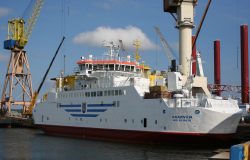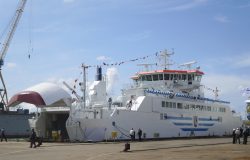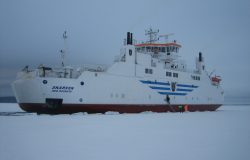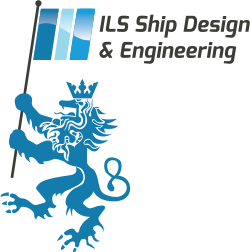ILS commissions:
– Conceptual design,
– Contract design
– Basic design
– Supervision of quay tests
– Supervision of full scale ice trials
Main dimensions:
– Length, max: 65.4 m
– Breadth, molded: 13.0 m
– Draught, max: 4.1 m
– Speed, max: 13.5 knots
– Max number of passengers: 100 people
– Max number of cars: 36
– Car deck dimensions: 45 x 7.5 m
– Main engines: 2 pcs Wärtsilä 9L20 a’ 1800 kW
– Azimuthing thrusters: 2 pcs Kongsberg AQM US 285 CP





